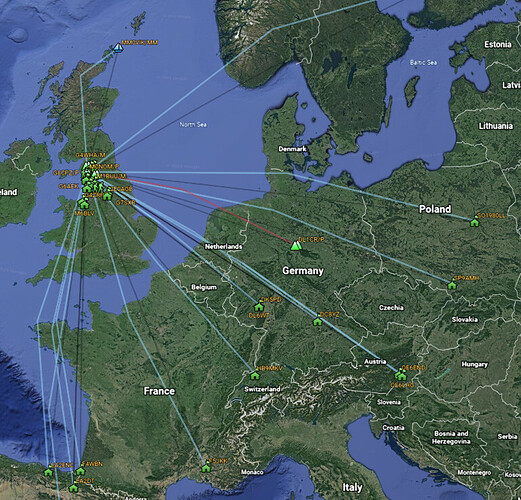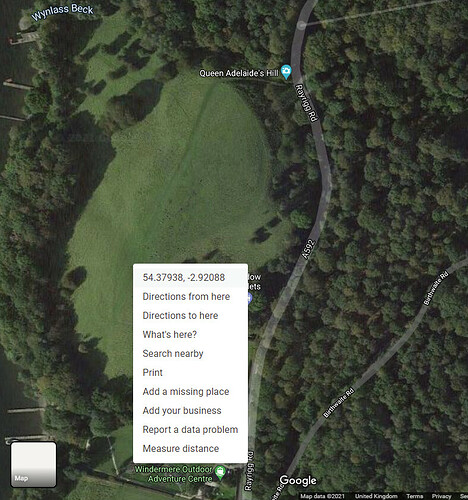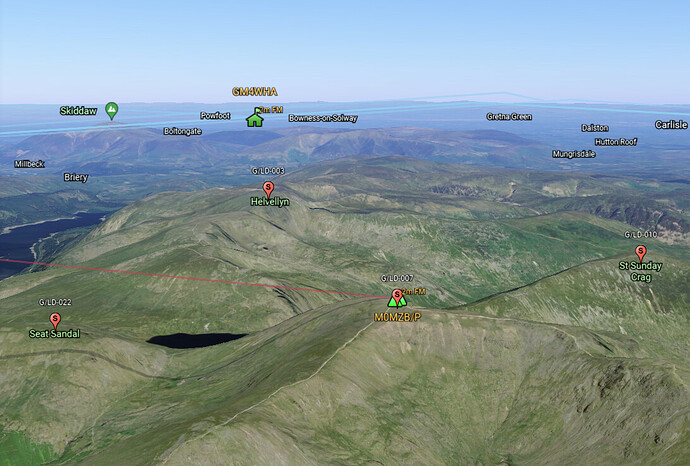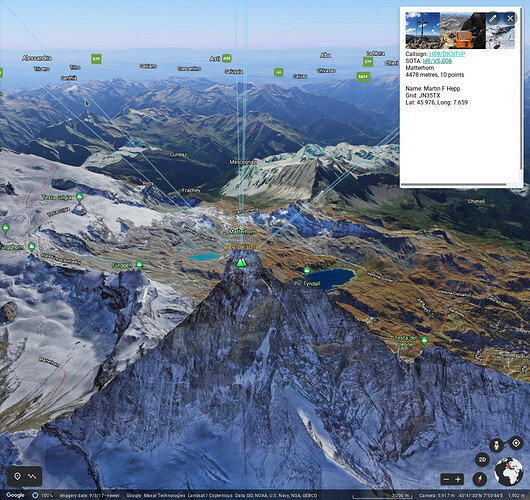Introduction
I’d like to announce the availability of my ADIF Processor tool. It originally started out as a way to process the output of Fast Log Entry which has limited support for ADIF fields by using key value pairs in the comment section to populate other fields in the ADIF file.
However, as it grew I added the facility to output a Google Earth KML file and it does very basic propagation ‘predictions’ based on a very simple atmospheric model. So it an easy way to turn an activation (or any other radio activity) into an interactive QSO map. If you have read any of my recent activation reports you’ll be familiar with what screenshots look like, but there is something special about being able to explore an activation’s QSOs interactively.
It also has a module to generate fixed width column output, which I used to print a ‘log book’ out on a 132 column line printer, but much more useful is that I have enhanced that facility to produce a Markdown table - which can then be pasted directly into activation reports.
There is still work to do, but if you want to try it now there is a beta-version on AWS: ADIF Processor
Specifying your Location
A SOTA activation log will have a MYSOTA record and this is enough to allow it to work out your location. If you were just operating portable, the MYGRID record with a 4/6 character Maidenhead locator will put you somewhere approximate. If you are operating from your home QTH, and your location is set in QRZ.COM, this is enough for it to work out your location. Otherwise you need to provide an override.
There are two options:
- Latitude, Longitude: these can be obtained from maps.google.com by searching for a location, right-clicking, and selecting the latitude, longitude. This can be pasted into the form directly.
Finding a location in Google Maps
I also routinely use the HamGPS application to record my 10 character Maidenhead locator which can be specified as the GRID and will put you within a few metres of your location.
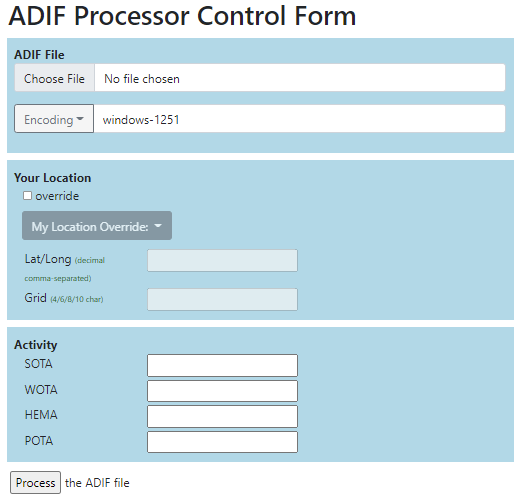
Activity Logging
Alternatively, if you have been doing one of the following:
- Summits on the Air
- Wainwrights on the Air
- HEMA
- Parks on the Air
then you can enter the summit/location reference in the Activity panel. Please report any bugs, the ADI file that applications generate vary wildly and there will be issues.
If processing is successful you’ll see the results page. If you didn’t specify your location you’ll see an error and won’t be offered a Google Earth KML file. If the application was unable to determine the location of a contacted station their callsign will appear in the box below. You can always go back and add a location in the ADI file. When using Fast Log Entry a Maidenhead location specified in the record starting with a hash #IO84NI is good enough. Sometimes folk don’t set their location right in QRZ.COM - you’ll often see them in central London if they are UK based. It’s up to you how far you go to fix these issues.
The three output files are:
- An ADI file containing locations where they could be determined in the Latitude & Longitude ADI fields.
- A KML file for loading into Google Earth.
- A Markdown file. This will contain a table of contacts that can be pasted directly into reflector/discourse:
| DATE | TIME | CALLSIGN | FREQ | MODE | RSR | RST | SOTA-TX | SOTA-RX | OPERATOR | QTH | COUNTRY | MHL |
|---|---|---|---|---|---|---|---|---|---|---|---|---|
| 2021.07.13 | 10:17 | G8CPZ/P | 145.475 | FM | 59 | 59 | G/LD-040 | IO84KI | ||||
| 2021.07.13 | 10:20 | G0WPO/P | 145.450 | FM | 59 | 59 | G/LD-040 | G/LD-051 | IO84LJ | |||
| 2021.07.13 | 10:27 | M0VPM/P | 145.550 | FM | 58 | 55 | G/LD-040 | G/LD-004 | IO84KP | |||
| 2021.07.13 | 10:33 | G7CDA | 145.350 | FM | 58 | 59 | G/LD-040 | |||||
| 2021.07.13 | 10:36 | G1OHH | 145.350 | FM | 59 | 59 | G/LD-040 | |||||
| 2021.07.13 | 10:37 | M1BUU/M | 145.350 | FM | 55 | 55 | G/LD-040 | IO84rc | ||||
| 2021.07.13 | 10:40 | G6LKB | 145.350 | FM | 59 | 59 | G/LD-040 | |||||
| 2021.07.13 | 10:41 | M7MCG/P | 145.350 | FM | 59 | 57 | G/LD-040 | WEETS HILL | ||||
| 2021.07.13 | 10:42 | G7SXR | 145.350 | FM | 53 | 55 | G/LD-040 | LEEDS |
KML Output for Google Earth
If using the Android version of Google Earth you can just click on the downloaded KML file. If using the browser version of Google Earth then select Projects and load from file. I don’t recommend using the ‘Professional’ application version.
You can click on both stations and the contact traces (light blue) in Google Earth for a summary of the station/contact details, and callsigns hyperlink through to QRZ.COM
Depending on the activity and state of the station (/P, /M, /MM) the application chooses an appropriate icon.
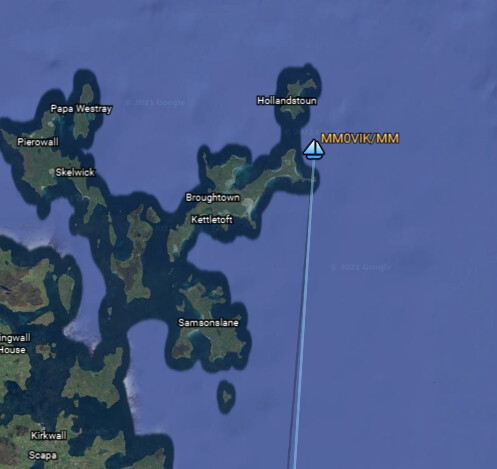
Have Fun!
There are lots of enhancements planned (one of the first to provide more ‘enrichment’ of the ADI record from the QRZ.COM XML data stream) but I think it is stable enough to release to the world. It would be great to see some of your results as screen grabs.
I’ll also try and expand this post to make it into more of a useful ‘manual’.
Please message/email me with any problems, including the ADIF you used.
Kind regards, Mark.
